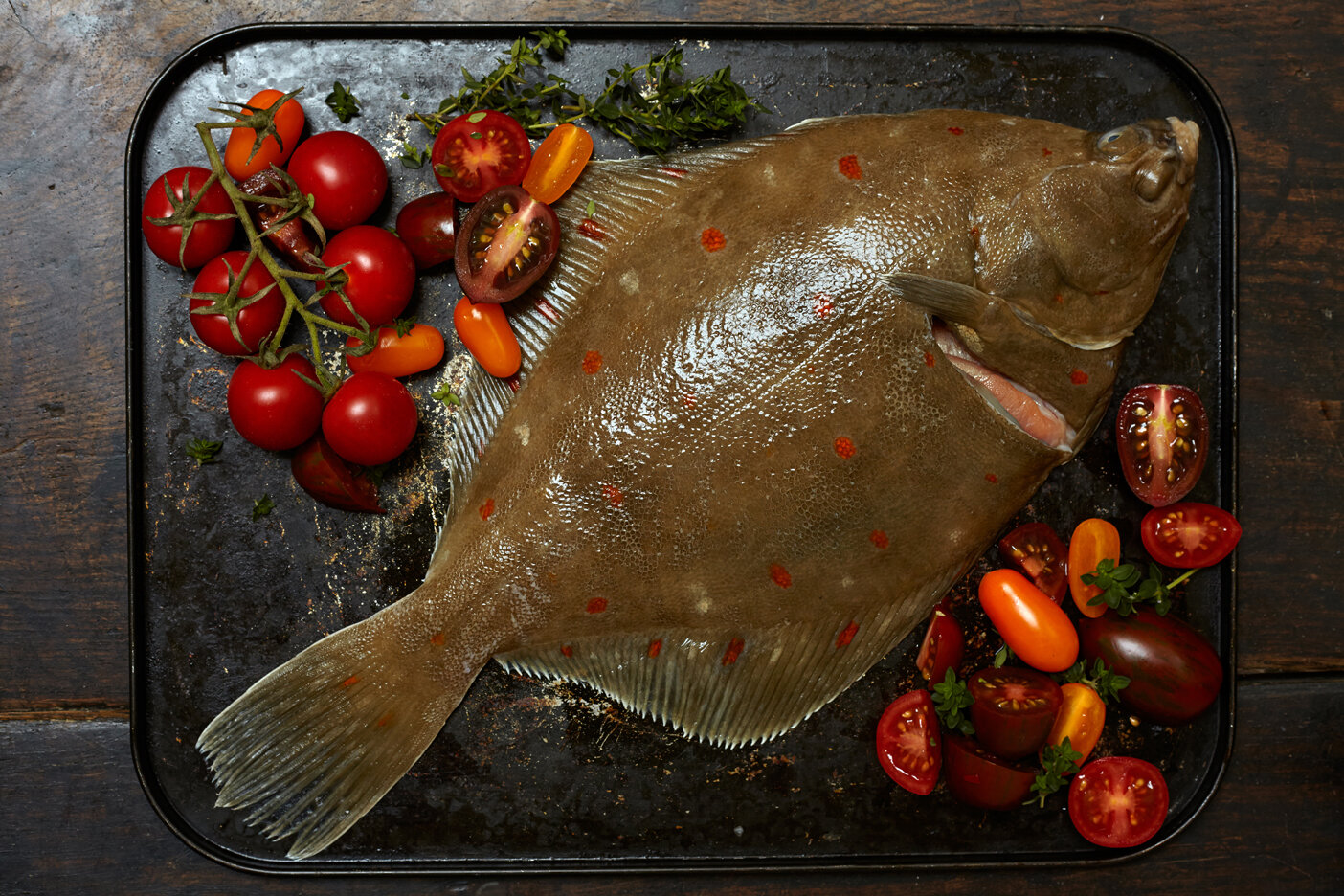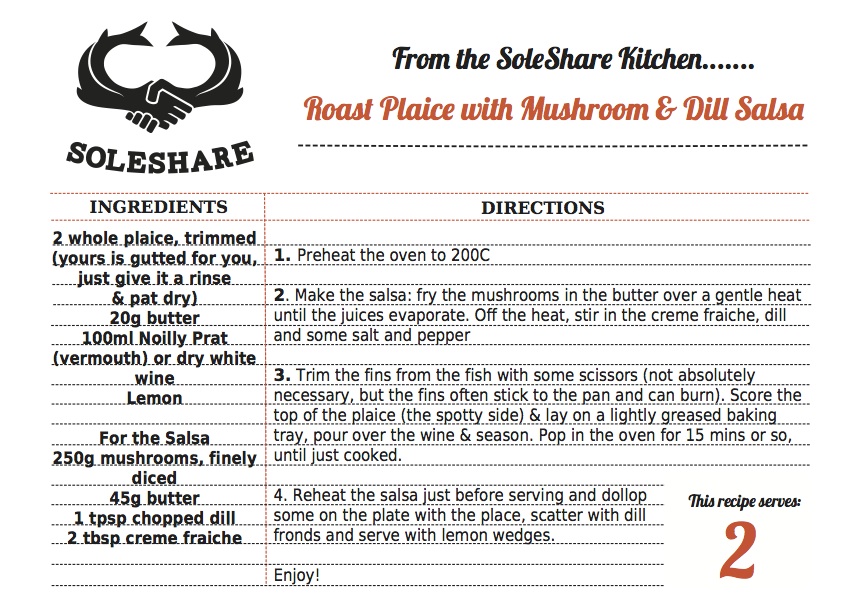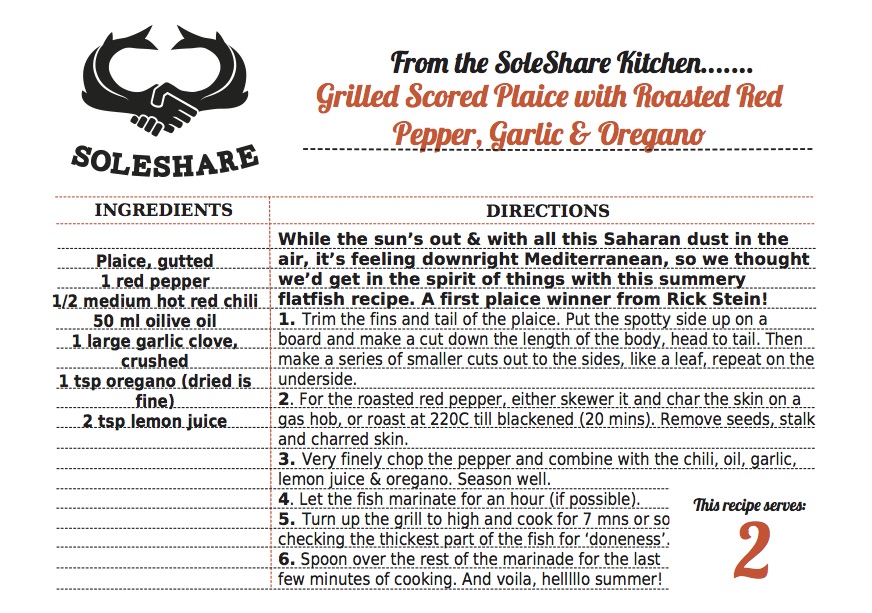
PLAICE
Home | Fish & Recipes | Plaice
Pleuronectes platessa
Biology
Plaice are identifiable by their brown skin, distinct orange spots and pearly white underside. They are often confused with flounders, but plaice are plumper, rounder and have smooth skin. They spend their time covered in a patina of sand (covering up those bright spots), eating small shellfish.
Fishing
Plaice are plentiful. They grow quickly and reproduce quickly. If they're caught in static nets like ours, then they're a great option. Most are trawled though, so if you didn't get it from us, do ask your fishmonger how it was caught.
Eating
In Victorian times plaice was plentiful and cheap - up to 30 million were sold each year at Billingsgate Market - and along with herring was a mainstay of the diet of London's poorest residents. Unfortunately, the connotation of being pauper’s food has been one they've found hard to shake off and they’re rarely seen on restaurant menus.
Part of the problem is that by the time plaice reach the shops, they're not at their best. When they’re as fresh as ours though, plaice are a great fish with a delicate, sweet flavour. They lose their sweetness after a few days, so try to eat plaice within a day or two of us giving it to you.
Do be careful not to overcook them though, or they'll be watery and bland.










